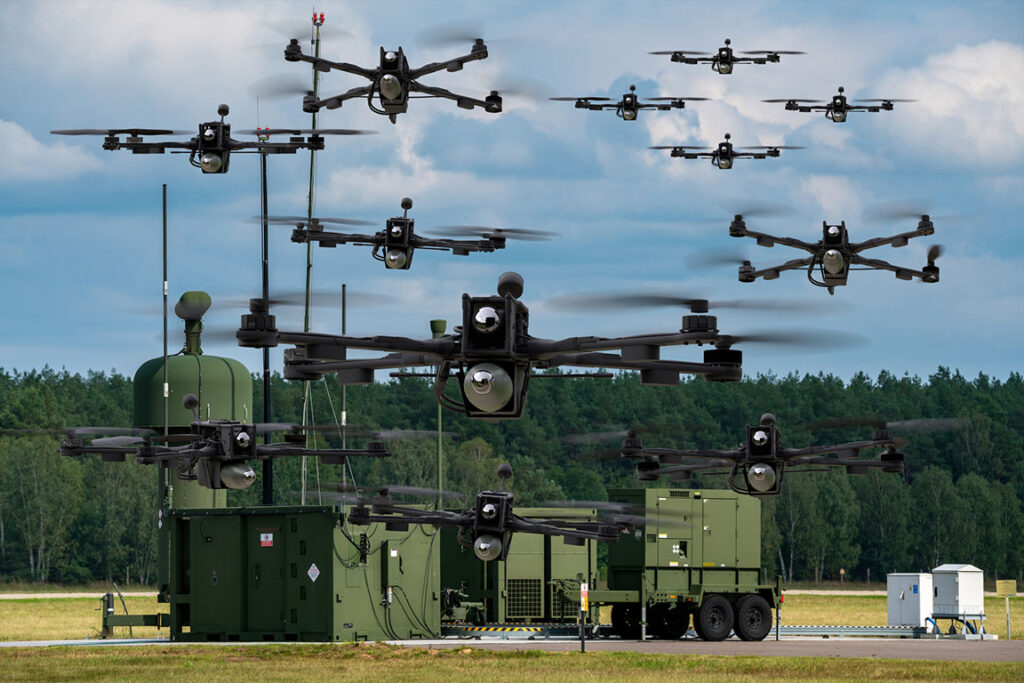The United State Department of Defense’s Replicator initiative calls for the development of scalable, autonomous weapons systems that will counter the Chinese Communist Party’s munitions buildup. ISTOCK
UNITED STATES STRATEGIC COMMAND
The United States Department of Defense (DOD) is working with international and industry partners to develop scalable, autonomous weapons systems aimed at countering the Chinese Communist Party’s (CCP) munitions buildup.
Announced by Deputy Defense Secretary Kathleen Hicks in August 2023, the Replicator initiative will streamline and accelerate delivery of innovative technology. “Replicator is meant to help us overcome the PRC’s [People’s Republic of China] biggest advantage, which is mass,” Hicks said during her announcement at a National Defense Industrial Association conference in Washington, D.C. “More ships. More missiles. More people.”
To lead the initiative, Hicks established the Deputy’s Innovation Steering Group, which she co-chairs with the vice chair of the Joint Chiefs of Staff. The steering group is working with the Defense Innovation Unit (DIU) to meet initiative goals. Replicator’s first iteration aims to develop, produce and deliver thousands of autonomous systems in the next 18 to 24 months.
Autonomous systems, including self-piloting ships and no-crew aircraft, have long proved to be lower-cost alternatives than crewed platforms and can be produced “closer to the tactical edge,” Hicks said. The systems can be modified, updated or improved with shorter lead times, and commanders can tolerate a higher degree of risk in deploying them. The DIU and international partners and allies met in October 2023 in Warsaw to gain a greater understanding of uncrewed systems’ capabilities.
“Together these efforts are shaving three to six years off transition and delivery timelines for warfighter priorities,” including satellite communications systems, anti-jamming radio links and surveillance systems, Hicks said. “This is about systematically tackling the highest barriers to enabling and unleashing the potential of U.S. and partner innovations.”
In addition to countering the CCP’s military mass, Replicator is part of a DOD-wide effort to build a bridge over the “valley of death,” where new weapons technologies fail to get into the hands of the warfighter, Hicks said. It is not a new program, she said, but will leverage existing funding, programming and authority to accelerate production and delivery at scale. The steering group has been working with U.S. Indo-Pacific Command to understand warfighter needs, she said. DIU is looking to industry partners, including nontraditional defense companies that have been advancing innovative technologies in the commercial sector, to the field.
Hicks has a list of capabilities to prioritize for the initial delivery of Replicator, DefenseScoop reported in January 2024. She and her staff have declined to publicly disclose those capabilities. “Our next step is engaging with our congressional committees of jurisdiction,” said DOD spokesman Eric Pahon. “The department is preparing acquisition strategies for specific systems that meet those capabilities in the timelines required by Replicator. And we’ll work with private sector partners whose systems are part of the acquisition strategies to accelerate production and fielding at scale.”

